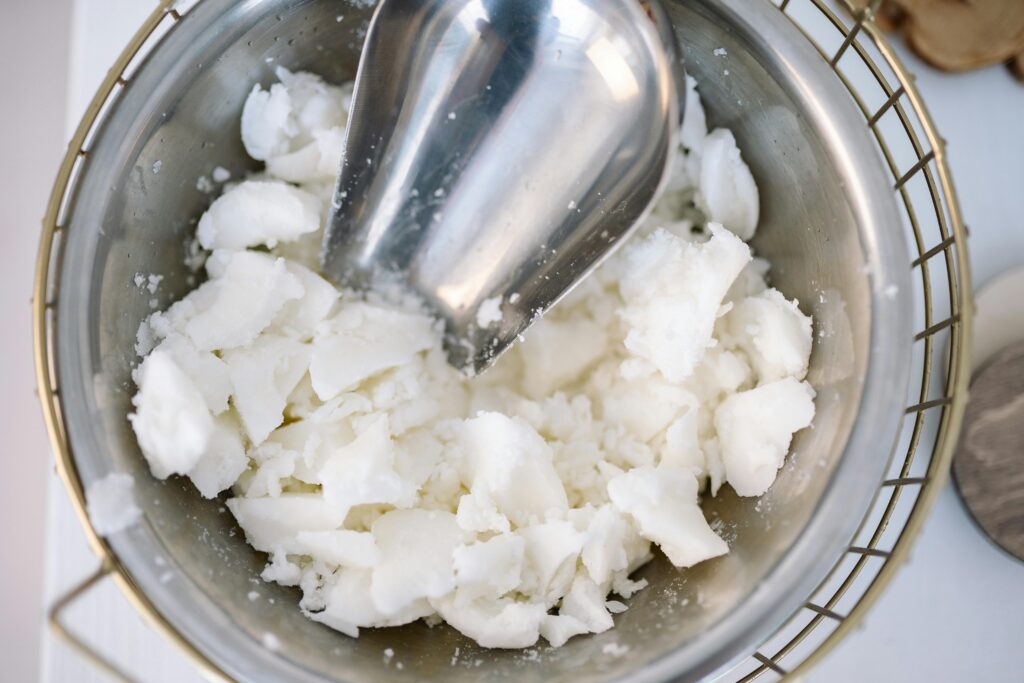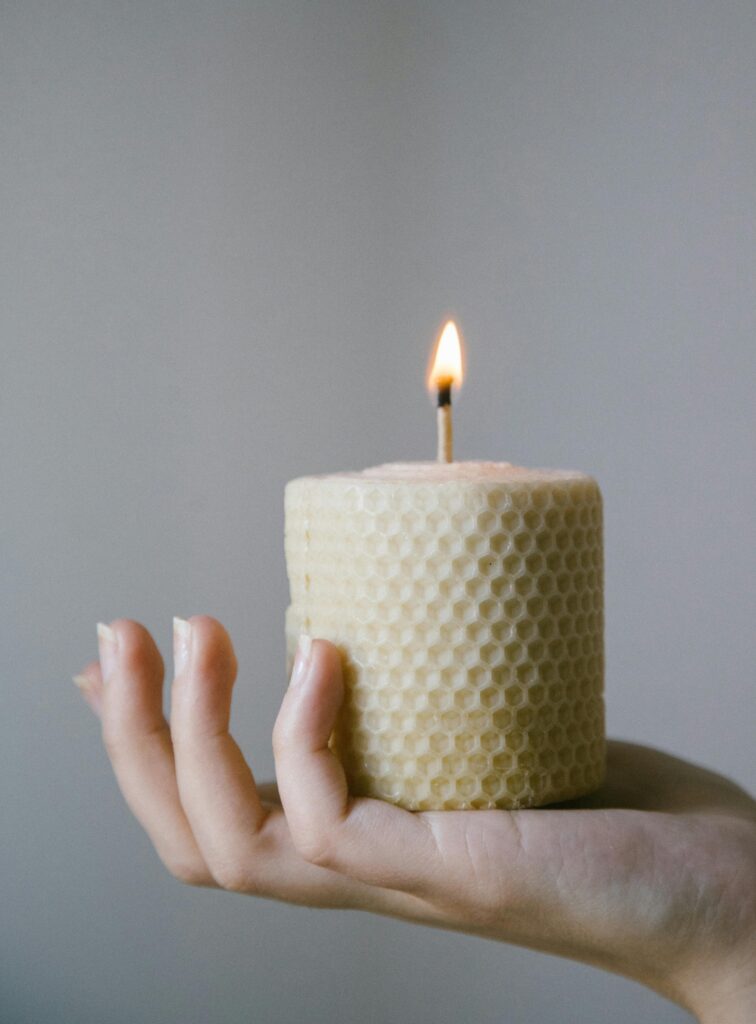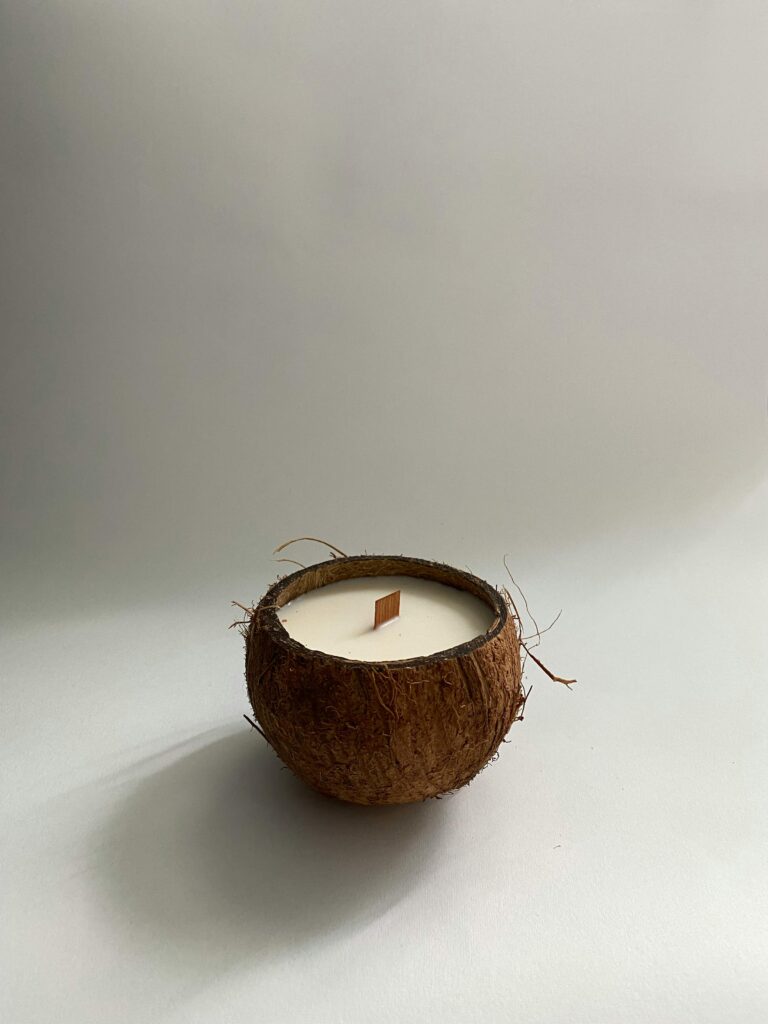Let’s Talk Wax: Popular Candle Waxes & What’s Best for Beginners
Let’s Talk Wax: Popular Candle Waxes & What’s Best for Beginners
Hey candle lovers!
When I first started making candles, I was so excited to dive in but also completely overwhelmed. The scent options, wick sizes, jar styles… and let’s not even get started on wax.
Yep wax matters a lot more than I expected. Each type of wax has its own personality. Some are creamy and luxurious, some throw scent like a dream, and others just look absolutely stunning when they burn. After years of testing and messing many batches, I’ve gotten to know these waxes pretty well.
So today, I’m sharing a breakdown of the most popular candle waxes and which one I think is best if you’re just starting out on your own candle-making journey.
Let me save you from the beginner candle wax mistakes I made that cost me money as well as time.
When choosing between paraffin, soy, coconut and beeswax for your candles, there’s no one-size-fits-all answer. Each popular candle wax has its own distinct personality – some are divas, others are low-maintenance roommates.
The wax you pick impacts everything: scent throw, burn time, and whether your creation looks Instagram-worthy or like a science experiment gone wrong.
Let’s pour into it!

Understanding Different Candle Waxes
A. Paraffin Wax: Properties and Performance
Paraffin wax is basically the old reliable of the candle world. It’s been around forever and still dominates the mass market for good reason. This petroleum-based wax melts consistently and holds fragrance like nobody’s business.
The pros? Paraffin candles throw scent incredibly well – walk into a room with a paraffin candle burning and you’ll know it immediately. Additionally, they are less expensive than alternative solutions, making them affordable for novices who are just getting started with candlemaking.
However, there is a reverse aspect. The small amounts of smoke that paraffin can produce worry some people. Even though paraffin waxes are far cleaner now than they were in the past, they are still not the most environmentally friendly option available.
Since I prefer using natural ingredients, I don’t use paraffin very often, but I can’t deny its effectiveness in high-fragrance candles.
B. Soy Wax: The Sustainable Choice
About ten years ago, soy wax went viral, and it has remained popular for good reason. This vegetable-based substitute, which is made from soybean oil, burns longer and cleaner than paraffin.
If you’re just starting out, soy wax is incredibly forgiving option. It melts at a lower temperature (around 120°F), making it safer to work with. When you mess up just like everyone at the early stage, you can simply wipe it up with soap and water.
Compared to paraffin wax, soy candles can last up to 50% longer. They may be slightly more expensive up front, but you’ll get more value for your money because of their slower burn rate.

C. Beeswax: Organic Advantages and Difficulties
The prima donna of candle waxes is beeswax, which is beautiful but requires a lot of care. As it burns, this natural wonder actually purifies the air by releasing negative ions that aid in the neutralisation of pollutants.
The honey-sweet scent of natural beeswax is lovely on its own, but it has a drawback in that it doesn’t mix well with other fragrances. Your carefully chosen essential oils may be overpowered or even competed with by the strong natural scent of the wax itself.
It’s also notoriously difficult to work with. Beeswax has a high melting point (around 145°F) and can get cranky when cooling, sometimes cracking or pulling away from the container walls. Not ideal for beginners still finding their feet.

D. Coconut Wax: The Luxury Alternative
Coconut wax is the fancy new kid on the block. This sustainable option comes with a premium price tag, but wow, the results speak for themselves.
This wax produces an incredible glass-like smoothness on the top of your candles – what chandlers call “perfect glass.” It also has an exceptional scent throw both when burning (hot throw) and just sitting pretty (cold throw).
Coconut wax is ideal for luxury candles because of its creamy texture and clean, slow burn. Coconut wax offers an opulent experience that is well worth the investment, whether you’re looking to make a high-end product or simply treat yourself.
E. Palm Wax: Unique Crystalline Appearance
Candles made with palm wax are distinctive in a crowd. As it cools, it naturally creates these exquisite, light-catching feathery crystalline patterns. Every palm wax candle has a unique appearance.
This distinctive look is accompanied by strong performance. Longer burn times and superior scent throw are a result of palm wax’s high melting point.
Since I prefer using natural ingredients, I don’t use paraffin very often, but I can’t deny its effectiveness in high-fragrance candles.
The environmental factor is tricky though. While palm wax can be sustainable, not all sources are created equal. If you go this route, look for suppliers who source from RSPO-certified plantations that don’t contribute to deforestation or habitat destruction.
Comparing Wax Types for Candle Making
Burn Time and Performance
Not all waxes are created equal when it comes to how long they’ll burn. Soy wax typically burns 30-50% longer than paraffin, making your candles last way longer. Beeswax is the marathon runner of the bunch – these candles can burn for days!
But burn time isn’t everything. Paraffin gives you that bright, steady flame that many candle lovers crave. Coconut wax burns clean with minimal sooting, perfect if you hate those black marks on your containers.
Some quick comparisons:
- Soy: Burns slow and cool, perfect for container candles
- Beeswax: Longest burn time, natural honey scent, but pricey
- Paraffin: Burns faster but with a brighter flame
- Coconut: Clean burn with excellent wax pool formation
Scent Throw Capabilities
The whole point of scented candles is, well, the scent! Paraffin is the heavyweight champion here, throwing fragrance like nobody’s business both when lit (hot throw) and sitting pretty on your shelf (cold throw).
Soy can be a bit stubborn with fragrance. You might need to use more oil, and even then, the scent won’t travel as far as paraffin. Coconut wax is the rising star – it holds and releases fragrance beautifully without the environmental concerns of paraffin.
Beeswax? It already smells amazing on its own with that natural honey scent, but it doesn’t play nice with added fragrances. If you want to make strongly scented candles, beeswax probably isn’t your best bet.
Ease of Working With
Beginners, listen up! Some waxes will make you want to pull your hair out, while others are forgiving friends.
Soy wax is your beginner bestie. It melts at lower temperatures (around 120°F), gives you plenty of working time, and forgives small mistakes. The downside? Those pesky “sinkholes” that can form as it cools.
Paraffin is pretty straightforward too, but requires higher melting temperatures (150-180°F).
Beeswax is the diva of candle waxes. It needs high heat (160-170°F), cools quickly giving you less working time, and can be frustratingly sticky. Not the best first date for newbies.
Coconut and blended waxes offer great middle ground options once you’ve got the basics down.
Cost Considerations
Your wallet definitely has a say in this decision! Here’s the price breakdown from lowest to highest:
- Paraffin: The budget-friendly option at $2-4 per pound
- Soy: Middle of the road at $4-6 per pound
- Coconut: Getting pricier at $6-8 per pound
- Beeswax: The luxury option at $10-15 per pound
Remember to factor in how much fragrance oil each wax can hold. You might save money on paraffin, but if you’re loading it with expensive oils to get that scent just right, your savings might melt away pretty fast.
Blended waxes often give you the best of both worlds – better performance than pure soy but at a more reasonable price than pure coconut or beeswax.
So, What’s the Best Wax for Beginners?
Hands down, my pick is soy wax
Here’s why:
* It’s affordable and easy to find
* It’s forgiving if you mess up a batch (and trust me, we all do at first)
* It works beautifully in container candles (the most beginner-friendly style)
* It lets you explore fragrance blending without overpowering scents
If you want something a little more elevated right away, try a **soy-coconut blend** — it’s just as easy to work with, but gives your candles a touch of that premium feel.
—
Final Thoughts from My Studio to Yours
Wax might seem like a small detail, but it’s really the heart of your candle. It affects how it burns, how it smells, how it looks and how your customers feel when they light it. So take your time, play around, and don’t be afraid to experiment. If you’re just starting your candle-making journey, welcome! It’s such a therapeutic, creative, and surprisingly addictive hobby (turned business, in my case). And if you ever need help choosing wax or want to see how different ones look, feel free to check out my collection at MellowShine .
Happy Mellting,
Sham.

